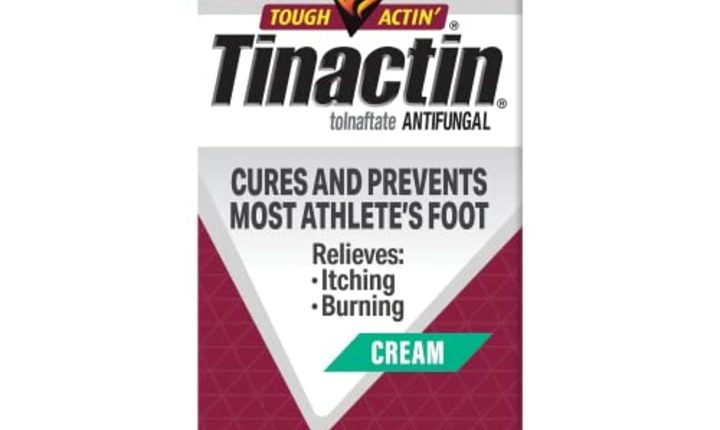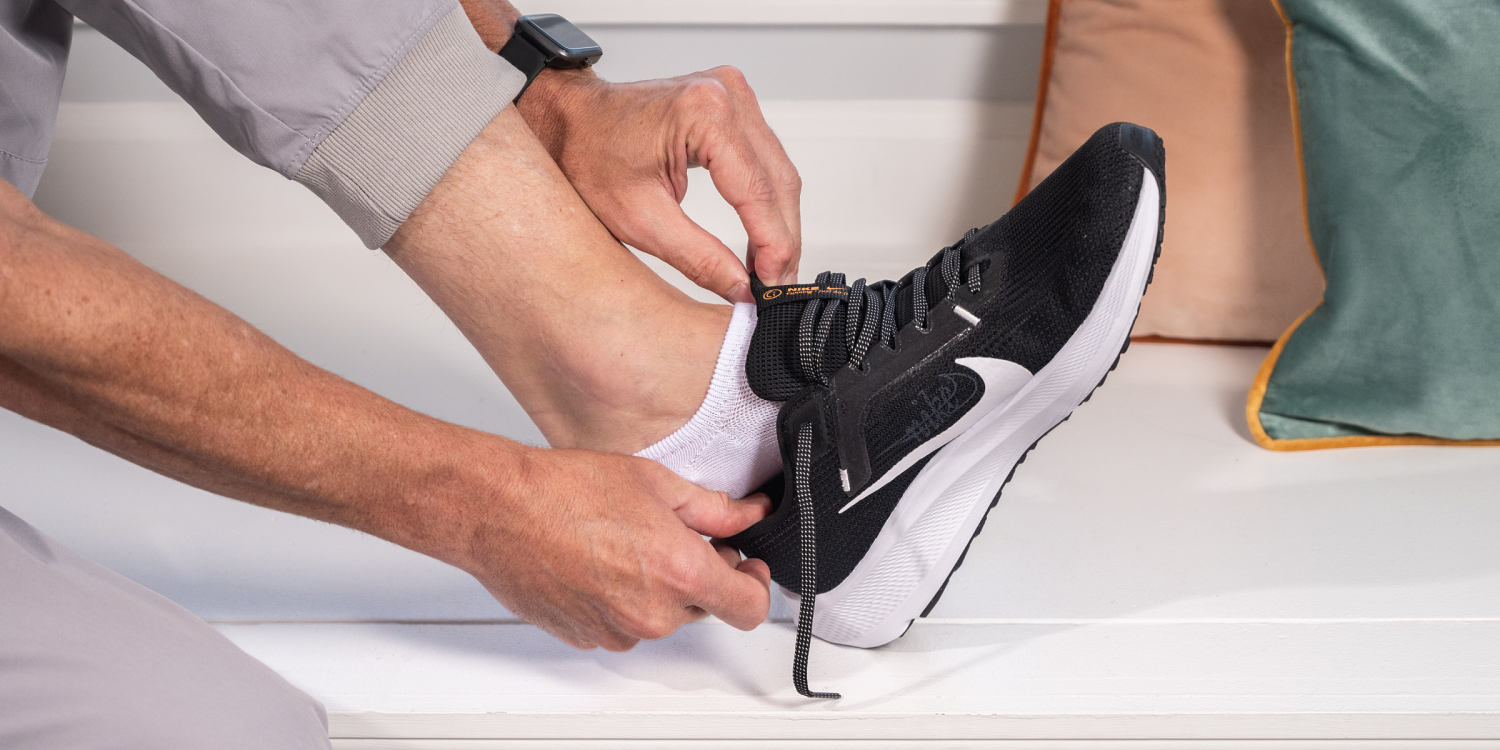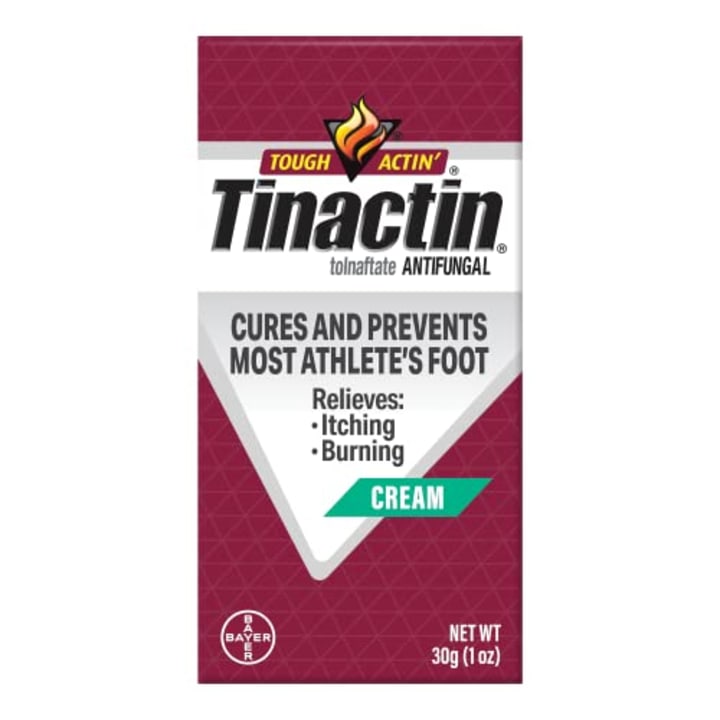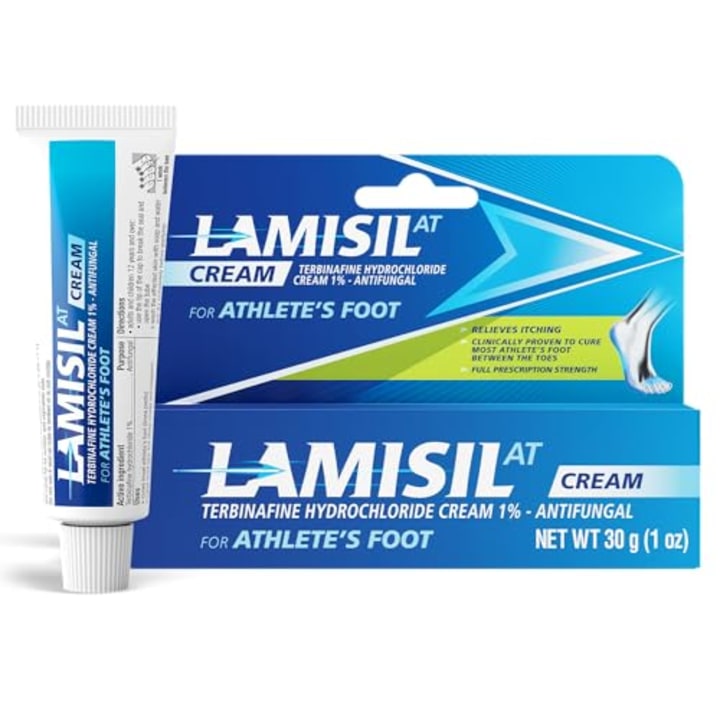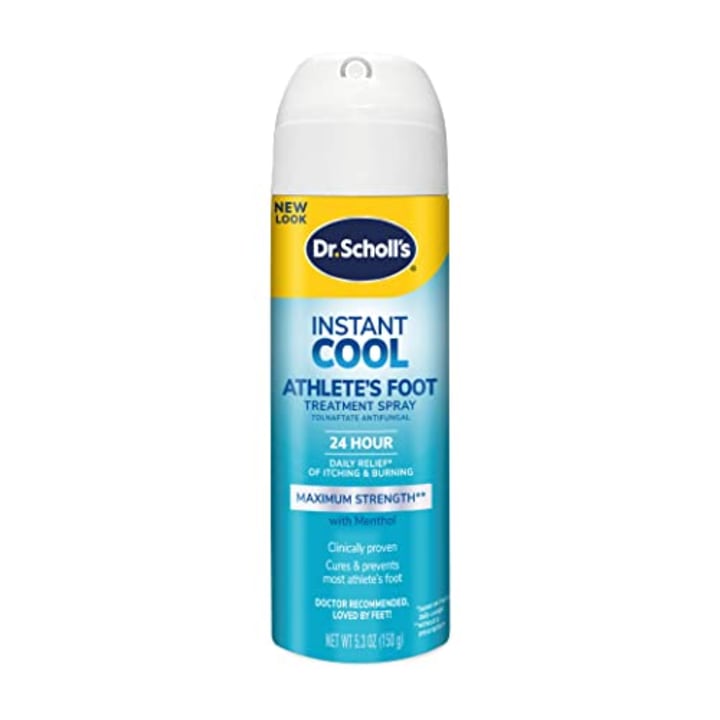“Athlete’s foot, also known as tinea pedis, is a fungal infection that affects the skin of the feet,” explains Dr. Mohammad Rimawi, a board-certified podiatrist in New York City. Left untreated, athlete’s foot can get uncomfortable (read: itchy and uncomfortable). But to treat it, you must understand exactly what it is and how to figure out if you have it.
Below, podiatrists explain exactly what athlete’s foot, the most common symptoms and how to treat it (with over-the-counter treatments or otherwise).
SKIP AHEAD What is athlete’s foot? | How do you treat athlete’s foot? | How we picked the best over-the-counter athlete’s foot treatments | Treatments for athlete’s foot | Are some people more prone to athlete’s foot?
Simply put, athlete’s foot is an infection. “It is caused by fungus — something that thrives in warm, moist environments,” says Rimawi. Now, think about your shoes: They can get warm and swampy. Fungus thrives in environments that are warm and moist. You can also pick up the type of fungus that causes athlete’s foot through exposure. “Common ways people get athlete’s foot include walking barefoot at public places like the pool or gym, poor hygiene and tight-fitting socks which allow moisture to accumulate on the skin,” says Rimawi. Another thing to know: Though athlete’s foot sounds singular, you can get it on both feet simultaneously
It’s not too difficult to tell if you have athlete’s foot — the symptoms are usually quite obvious. “Signs of athlete’s foot include scaling, dryness, blistering, redness, burning or stinging,” says Dr. Bruce Pinker, a board-certified podiatrist and foot surgeon in New York. It often occurs on the bottom of the foot, especially on heels or between the toes. Some people may only experience a few of these things, while others may experience all the symptoms simultaneously. It’s also not unusual for symptoms to start fairly mild and then get worse as time goes on.
Ready for some good news? “Luckily, treatments for athlete’s foot have a high success rate,” says Rimawi. “The first thing you want to do is eliminate the causative factors.” That means you should stop walking barefoot in public places like the gym shower or at the airport. If your feet sweat a lot, change your socks and shoes often. Beyond this, you’ll likely also need some sort of medication. Over-the-counter, topical creams work very well in most cases, adds Rimawi. If you have a bad case of athlete’s foot, you may need a doctor to prescribe you oral medication.
Over-the-counter creams are a go-to for athlete’s foot, which makes it easy to treat this condition if you get it. Below, experts share what you should pay attention to when shopping for an over-the-counter treatment for athlete’s foot:
- The active ingredient: “Look for a treatment that contains clotrimazole, which has good efficacy against a wide spectrum of fungi that cause athlete’s foot, says Rimawi. “This ingredient has been available for a long time and is well studied.” Other active ingredients similar to clotrimazole that can also work for athlete’s foot are tolnaftate, terbinafine hydrochloride and butenafine hydrochloride.
- The formula: reams, sprays and powder are all available, so think about what makes the most sense for you and will be easiest for you to apply.
- Ratings: All over-the-counter treatments we included have at least a 4.0-star average rating from at least 1,000 reviews.
Below, we rounded up over-the-counter treatments for athlete’s foot that either were recommended by an expert or that meet the criteria our experts set forth and have a high rating.
Tinactin
Pinker says he has found this cream effective for many people with athlete’s foot. The active ingredient in this treatment is tolnaftate, which reduces itching and burning while eliminating fungus. Tinactin is available in a cream and a spray.
Lotrimin Ultra Pen
Another recommendation from Pinker, Lotrimin Ultra, contains the active ingredient butenafine hydrochloride, which alleviates the symptoms of athlete’s foot while also getting rid of the fungus. According to the brand, this cream is greaseless and odorless and won’t stain your socks. This option is a cream that comes in a pen applicator, which means you can rub the pen tip over infected areas without touching the area with your fingers. This can help prevent the spread of the fungus.
Lamisil 1% Athlete’s Foot Cream
This antifungal cream uses another form of hydrochloride (terbinafine hydrochloride) to treat athlete’s foot. Pinker says it is another popular option and should be used twice daily weekly to eliminate athlete’s foot. According to the brand, before applying, wash your feet and then apply a small amount to the infected and surrounding areas.
Dr. Scholl’s Instant Cool Athlete’s Foot Treatment
The spray, which has a 4.5-star average rating from over 3,110 reviews on Amazon, feels cooling as it goes on. This can relieve the burning and itchy sensation caused by athlete’s foot. The active ingredient is tolnaftate, and the spray makes it easy to apply. According to the brand, not only does this spray treat athlete’s food, but you can also use it preventatively.
Family Care Clotrimazole Anti-Fungal Cream
Rimawi recommends clotrimazole as a great over-the-counter option to treat athlete’s foot and this cream has a 4.4-star average rating from over 1,900 reviews on Amazon. The cream can also be used to treat jock itch and ringworm. Apply this cream twice a day to the infected area for a week.
Anyone can get athlete’s foot, but some people are more prone to it. Take, for example, athletes. It got its name because athletes are more likely to get sweaty feet in their sneakers and are more prone to walking barefoot in a locker room — two things that can lead to this condition.
Beyond athletes, anyone exposed to conditions that lead to warm, moist feet is more likely to deal with athlete’s foot. “People with weakened immune systems may also be more prone to it,” says Rimawi. “Fungi are opportunistic organisms that take advantage of you at your weakest.” Pinker says that those who suffer from hyperhidrosis—meaning they sweat excessively—are also more likely to encounter athlete’s foot. If you tend to sweat, changing your shoes and socks regularly can help.
Meet our experts
At NBC Select, we work with experts with specialized knowledge and authority based on relevant training and/or experience. We also ensure all expert advice and recommendations are made independently and without undisclosed financial conflicts of interest.
- Dr. Mohammad Rimawi is a board-certified podiatrist in New York City.
- Dr. Bruce Pinker is a board-certified podiatrist and foot surgeon in New York
Why trust NBC Select?
Bethany Heitman is a contributor at NBC Select and a journalist who regularly covers topics like beauty, home and lifestyle. For this story, she interviewed podiatrists about athlete’s foot.
Catch up on Select’s in-depth coverage of personal finance, tech and tools, wellness and more, and follow us on Facebook, Instagram, Twitter and TikTok to stay up to date.
Source: | This article originally belongs to Nbcnews.com
